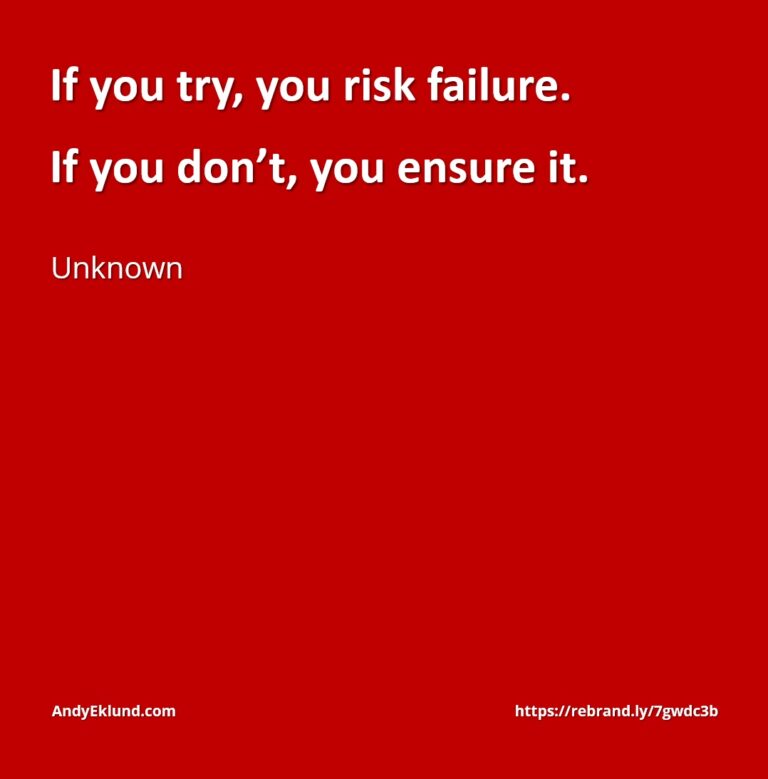Be Risky with Your Ideas! is Post #10 in a series from a presentation entitled 11 Great Creative Slip-Ups: The Most Common Mistakes in Coming Brainstorming. The introduction to the series begins here.
The Problem: People avoid risky ideas
Someday I want to invent a Creative Thermometer. (Creativometer?)
I want one so I could jab the pointy end into an idea to tell its temperature. But, instead of Celsius or Fahrenheit, I’d use adjectives like …
YAWN SAFE and BORING at the sad cold barren end of the scale.
UNUSUAL or EDGY or OOOO TELL ME MORE in the middle, getting warmer stage.
ABSURD, OMG and YOU NEED TO BE IN A STRAITJACKET at the red-hot chili-salsa opposite end.
Here’s what I know about the sad end. These types of ideas will never change anything – whether it’s opinions, attitudes or behaviours.
Middle ones? Well, those just tell me you’re too ambitious to be boring, but too boring to be ambitious. And do they change anything? Maybe, but usually not.
The blazing “challengizing” end? Those are the interesting ones. Those are the only place you’ll find Big Ideas.
Big Ideas are always risky ideas. They are never safe. N.E.V.E.R.
Or maybe I’d use that pointy end to stick it in the backside of brainstormers. To tell them to do something BIG. Try something NEW. Take a fucking RISK.
Haha, don’t mind me. I’m just ranting, like the old geezer I’m becoming. (Or maybe I am?)
But I know this.
Somewhere, some place, I guarantee you there’s someone who would be more than happy to provide your Decision Maker or Client with a very risky Big Idea. And worst of all, they’ll listen to them … and not to you.
Read the quote above again, if you’re still missing my point.
The Solution: Be risky! Stick your neck out!
1. Look for the risky ideas.
Literally. At the end of your brainstorming, look for the one idea that truly pushes the proverbial envelope. If you don’t have one, you aren’t finished brainstorming.
I don’t care if you never sell the risky idea to this Client, for two reasons.
You need to practice creating risky ideas for your Client. Don’t tell me you’ll do it when you need to. No, you won’t. Like everything in life, creativity takes practice. (“Fortune favours the prepared mind,” so said Louis Pasteur.)
Second, even if you never sell the risky idea to the Decision Maker, you should absolutely show it to them. In fact, I’d sell it like it was Louis Vuitton.
“Oh, here’s such an incredible idea, but it’s well beyond your price tag …” (Or your interest, your ability to think out of the box, blah blah.) “No no no, it’s not for you … but it’s such a great idea that I just have to show it to you but I know very well it’s not for you. Nope, not for you … but oh I can’t stand not showing it you …”
I have sold more ideas this way, simply because those types of conservative clients can’t wait to get their hands on something I tell them they can’t have.
And finally, if you do have a risky idea, ask yourself: Why am I ignoring it in favour of something else? If the idea isn’t yet ‘right,’ then improve it.
Next, if your Big Idea is risky, then read on …
2. Expect the world to hate your Big Idea.
The easy part is brainstorming the idea. The hard part is selling it. So, be prepared.
- Talk to the experts. Never sell a big idea cold. You need endorsement. Two types of people influence the Decision Maker: Coaches and Detractors. Invite both types to see the idea, ask their opinion of the idea’s strengths and weaknesses, then improve.
- Reach out to Constructive Detractors over Coaches. Coaches will always love and complement you. (They’re “professional moms.” They’ll love you no matter what.) These style of detractors – once they see you’re genuinely listening to their comments – can become the strongest type of Coach.
- Prepare your ammunition. The Decision Maker performs their role by balancing reward and risk. You should do the same before meeting face-to-face. Prepare your argument. Get your facts in order. Think Pros vs. Cons. Prove that the Big Idea can and should be done. Find case studies. When you get your one-minute spotlight, you’d not only better shine, but you’d also better look like a Worthy Adversary.
If you didn’t realise it, senior executives appreciate Worthy Adversaries.
More often than not, you may not sell the Decision Maker on the idea, but at least you’ll show you mean business. Perhaps next time, they’ll give you one more inch of respect when you bring them another Big Idea.
Also …
Know the reasons why people reject ideas
And, consider what to do when you do get NO
Finally, know which type of NO did you get
3. Put together an issues management plan for your risky ideas.
Every Big Idea needs a plan to manage the issues.
If your best solution is truly daring (bravo!), think about all the ways it could go wrong.
Plan how to manage the issues. Better yet, pretend it’s your money and personal reputation on the line, not your client’s. How would you protect yourself? That’s what you should do for your Decision Maker.
And if you do, your Decision Maker will take notice, trust me.
(By the way, I did create a Creativometer! It’s here!)
What other tactics have you tried to ensure you’re bringing risky ideas to the table?
What other ways have you prepared the path to sell a risky idea to the Decision Maker or Client?
Please add your thoughts and comments below.
If you want to return to the original article with links to the other ‘Slip-Ups’, click here.



No comment yet, add your voice below!